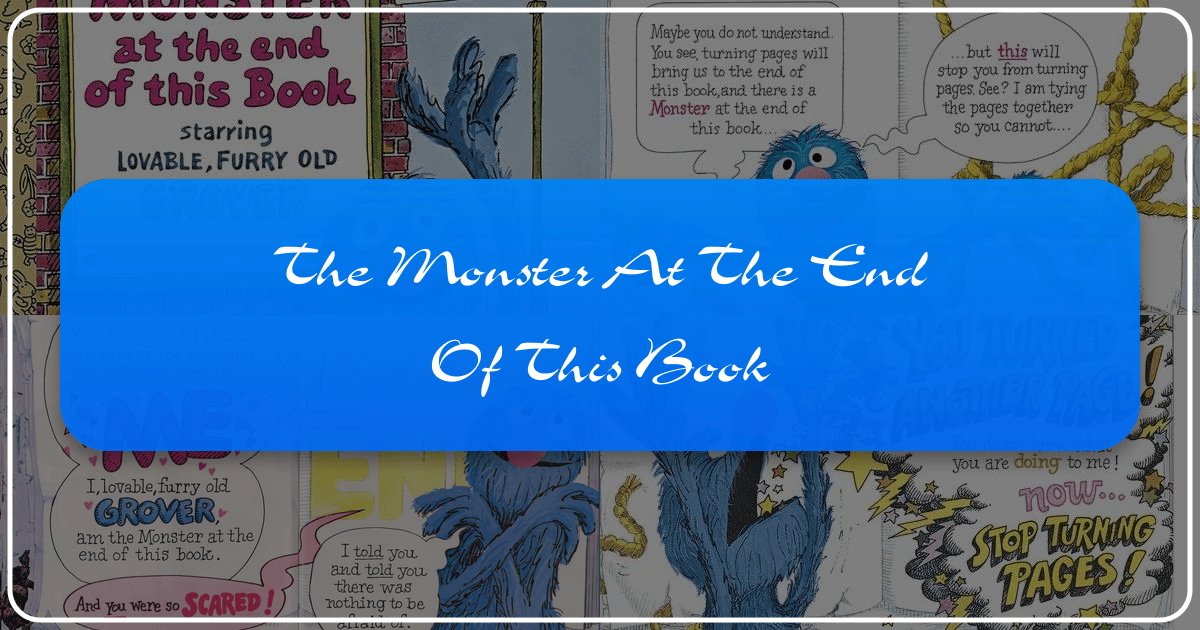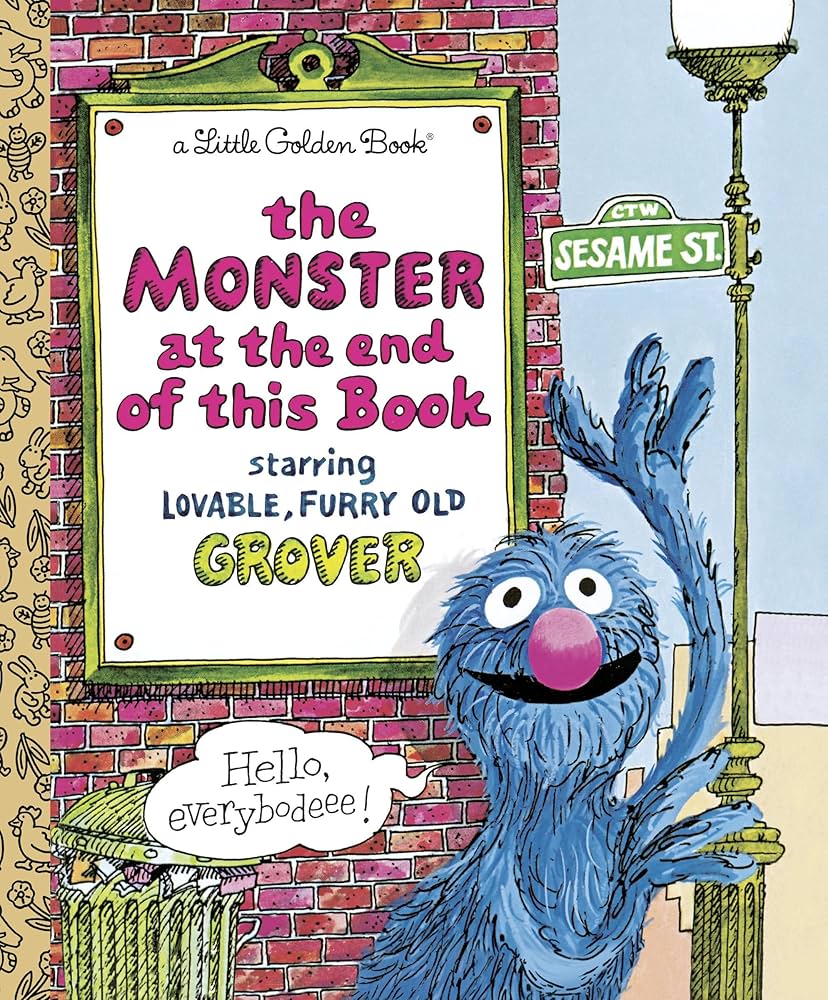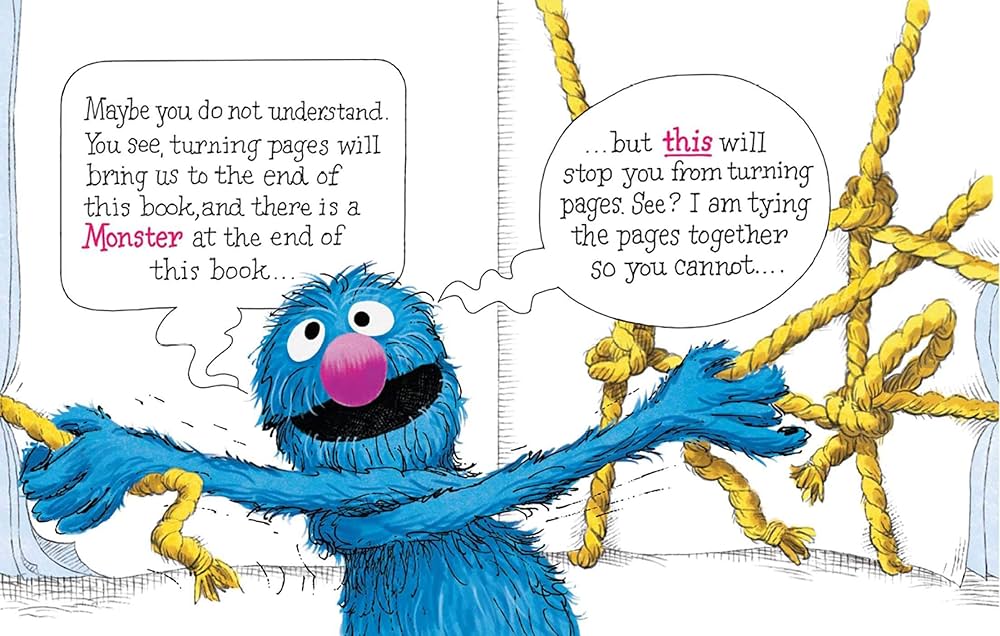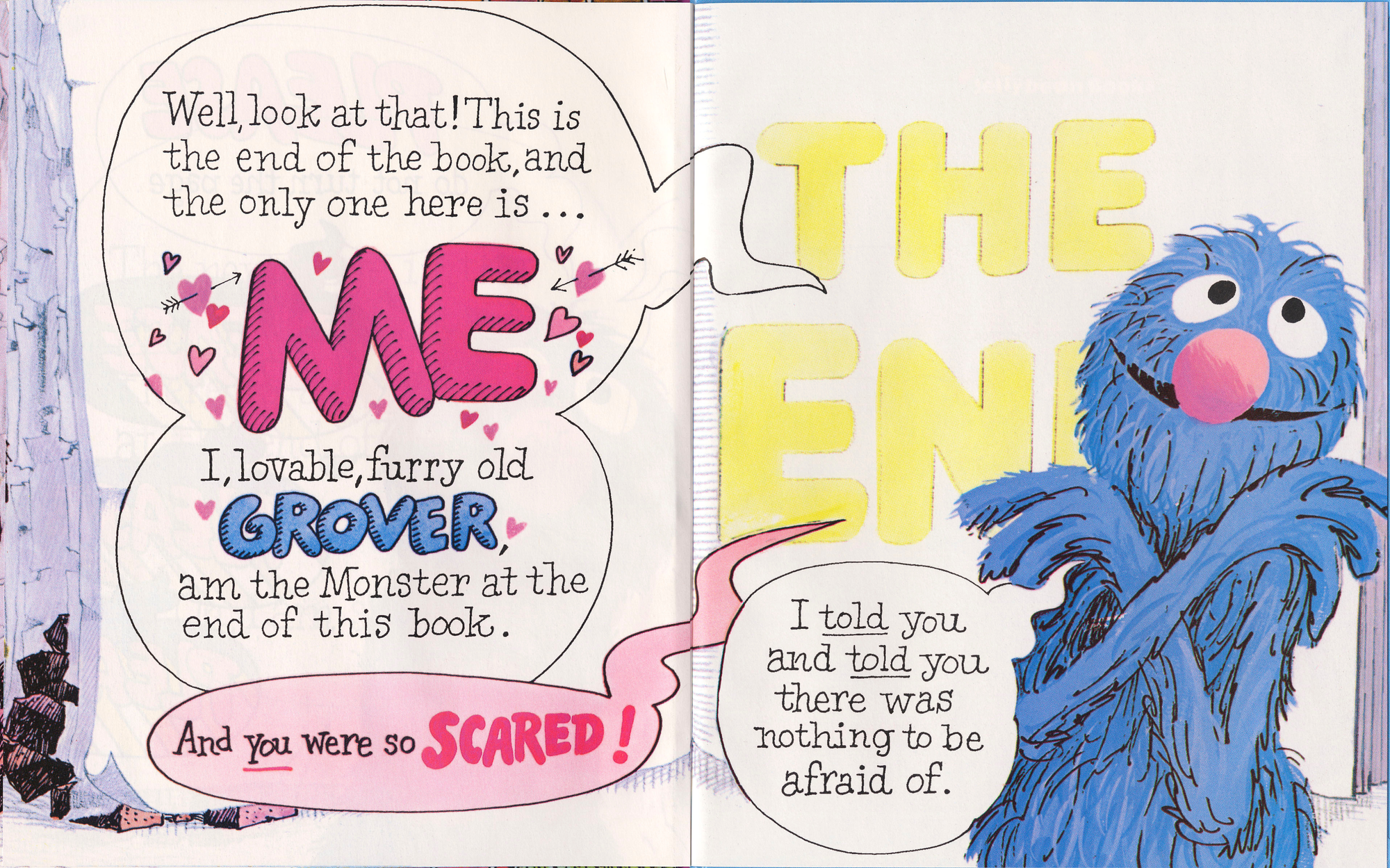The Monster at the End of This Book: A Multifaceted Exploration

The enduring popularity of “The Monster at the End of This Book” extends far beyond its simple, engaging narrative. This seemingly straightforward children’s book, with its iconic furry protagonist Grover, delves into surprisingly complex themes of fear, self-discovery, and the metafictional nature of storytelling itself. Analyzing the book through various lenses reveals its enduring appeal and lasting cultural impact. This article explores “The Monster at the End of This Book” across several key areas: its genre and literary classification, the authors’ contributions and styles, its educational value and life lessons, its presence in libraries, and finally, its pervasive cultural influence.

Genre and Literary Classification
“The Monster at the End of This Book” defies simple genre classification. While primarily marketed as a children’s picture book, its narrative structure and self-awareness position it within the realm of metafiction. The book’s central conceit – a character directly addressing the reader and attempting to manipulate their actions within the narrative – is a hallmark of metafictional works that blur the lines between fiction and reality. The playful interaction between Grover and the reader creates a unique reading experience that transcends the typical passive consumption of a story.
It also comfortably sits within the subgenre of interactive fiction for children. The text actively engages the reader, demanding their participation in progressing the storyline. The reader’s act of turning the page becomes a crucial element of the narrative, a direct challenge to Grover’s pleas and a subversion of his attempts at control. This interactive element significantly enhances the book’s playful nature and makes it memorable for young readers. Furthermore, the book can be categorized as a children’s classic, given its lasting impact and enduring presence in children’s literature. Its inclusion in multiple “bestseller” lists across various retailers further cements this status.

Finally, the book possesses elements of humor and suspense. Grover’s escalating anxieties and his increasingly desperate attempts to thwart the reader’s progress build a light-hearted suspense, creating a comedic tension that appeals to both children and adults. The final reveal of Grover as the “monster” itself is a surprising and humorous twist, solidifying the book’s comedic nature.
A Lasting Impact on Children’s Literature
The book’s unique blend of genres – picture book, metafiction, interactive fiction, humor, and suspense – has had a lasting impact on children’s literature. It demonstrates the creative potential of challenging traditional narrative conventions and directly engaging young readers. It shows that a book can be both entertaining and intellectually stimulating, demonstrating that even seemingly simplistic texts can be fertile ground for deeper literary analysis and discussion. The continued publication and adaptation of the book serves as a testament to its lasting influence on children’s literature, demonstrating a persistent appeal across generations.
Authors and Their Contributions
The collaborative effort between Jon Stone and Michael Smollin resulted in a uniquely successful and memorable children’s book.

Jon Stone: Writer and Visionary
Jon Stone, the book’s writer, was a pivotal figure in the creation of Sesame Street. His experience as a writer, director, and producer for the show directly informed the writing style of “The Monster at the End of This Book.” His writing displays a profound understanding of children’s psychology and humor. The text successfully navigates the fine line between gentle suspense and outright absurdity, making the story both exciting and hilarious for young readers. His understanding of child psychology is evident in the way Grover’s anxieties are portrayed, capturing the specific fears and uncertainties experienced by young children. Stone’s ability to evoke empathy for Grover, despite his outlandish behavior, shows his mastery of crafting relatable characters.
Stone’s skill in breaking the fourth wall and engaging the reader directly is another hallmark of his writing. Grover’s constant pleas to the reader to avoid turning the page subverts the traditional passive relationship between the reader and the text. This innovative approach to storytelling laid the groundwork for future interactive children’s books and demonstrates Stone’s pioneering approach to children’s literature.
Michael Smollin: Illustrator and Visual Storyteller
Michael Smollin’s illustrations are integral to the book’s success. His artwork perfectly captures Grover’s increasingly panicked expressions and the escalating absurdity of the situations Grover finds himself in. The illustrations, with their expressive use of color and line, complement the text, enhancing the comedic and suspenseful elements of the story. Smollin’s distinctive style for Grover is instantly recognizable and has contributed to the character’s lasting cultural presence.
Educational Value and Life Lessons
Despite its playful nature, “The Monster at the End of This Book” offers valuable educational and life lessons.
Confronting Fear
The book tackles the common childhood fear of monsters, presenting a humorous and reassuring approach. Grover’s anxieties become a shared experience for young readers, and the ultimate resolution – the revelation that the “monster” is only Grover himself – helps to normalize and mitigate these fears. The book provides a comforting narrative that allows children to confront their own fears in a safe and enjoyable context.
Overcoming Avoidance
Grover’s attempts to avoid the “monster” by creating obstacles and begging the reader to stop show a classic coping mechanism—avoidance. However, the resolution of the story subtly encourages the reader to face their fears. The reader’s perseverance in turning the pages, despite Grover’s resistance, serves as a metaphor for overcoming avoidance behaviors. This demonstrates that facing fears, even seemingly childish ones, can lead to positive outcomes and even humorous self-discovery.
Self-Awareness and Self-Acceptance
The twist ending, with the reveal of Grover as the “monster,” prompts reflection on self-perception and self-acceptance. Grover’s embarrassment at his own behavior highlights the importance of self-awareness and recognizing one’s own anxieties and reactions. The postscript showcases the importance of self-acceptance, suggesting that even after experiencing irrational fear, one can acknowledge it, forgive oneself, and continue on. This lesson of self-acceptance is subtly conveyed yet powerfully resonant, especially for young readers still navigating their own self-perception and emotions.
Libraries and Archives
“The Monster at the End of This Book” holds a significant place in many libraries, both physical and digital.
Public Libraries
It is highly likely that this book is present in almost every public library, available for young children to borrow and enjoy. Its accessibility in public spaces makes it a vital part of the shared cultural heritage for children around the world. The book’s enduring popularity ensures its continued presence in public library collections, making it accessible to new generations of young readers.
Digital Libraries
It also features in various digital library systems, both for schools and home use. Digital accessibility further expands the book’s reach, providing convenient access for families and educational institutions. This digital presence keeps this story alive for today’s readers in a easily accessed format.
Cultural Impact and Legacy
The cultural influence of “The Monster at the End of This Book” is undeniable.
Enduring Popularity and Adaptations
The book’s continuing success is demonstrated by its numerous reprints and translations across numerous languages and cultures. This widespread acceptance illustrates a universality in the themes explored – fear, the challenge of facing obstacles, and finding humor in uncertainty – all resonant across cultures and generations. The book has also been adapted into various formats, including television specials and stage plays, showcasing its broad appeal and adaptability. These adaptations showcase its versatility and demonstrate its capacity for engagement across a wide range of media.
Literary Influence and Parodies
The innovative aspects of the book’s narrative structure have inspired numerous authors to experiment with metafiction and interactive elements in children’s literature, expanding this genre and broadening storytelling techniques for children. Its clever self-referential qualities have also prompted numerous literary parodies, reflecting the sustained appreciation and recognition of the work’s unique qualities.
Awards and Recognition
The book’s lasting recognition is also evident in awards and accolades it has received, including its status as a bestseller and its continued presence in library collections. These awards further affirm its position as a prominent and valuable work of children’s literature and showcase its cultural impact.
In conclusion, “The Monster at the End of This Book” is more than just a simple children’s story. It is a multi-layered work that engages readers of all ages on various levels. Its enduring popularity and impact across genres, its innovative storytelling techniques, its thoughtful exploration of childhood anxieties, and its prominent role in libraries and the wider cultural landscape showcase its remarkable and continued impact on the world of children’s literature.